The trade of making arrowroot vermicelli is now the main income for the villagers of Minh Hong in Minh Quang commune, Ba Vi district, Hanoi with each household earning about 150-200 million dong/year.This is 15 times higher than rice growing or mulberry growing and silkworm breeding.
In 2015, thelocal arrowroot vermicellireceived a collective brand name of “Minh Hong Arrowroot Vermicelli”. Since then, the product has graduallycarved a niche in the market.According to Nguyen Van Duan, Chairman of Minh Hong Agriculture Cooperative, previously many households in the village engaged in growing mulberriesand breeding silkworms on a large-farm scale. However, when the state recollected the land for other purposes, the villagers shifted to growing arrowroot plants along the two banks of streams to extract starch and make arrowroot vermicelli. At the beginning, almost all households in the village made the product according to the traditional method so the productivity was low, about 15kg of arrowroot vermicelli/day. For this reason, they mainly focused on growing arrowroot plants to make starch and their vermicelli was less popular in the market despite its high quality.
Since 2001 when Minh Hong was recognised as a craft village for making starch, the production of arrowroot vermicelli has strongly developed. The village established a cooperative which now has 165 members who specialise in extracting starch and making arrowroot vermicelli all year round to meet the increasing demand of customers. To improve the quality of the product and reduce labour costs, the workshops in the village invested in modern combined machinesfor filtering starch, steaming pots for girdling cakes and cutters.
To have enough materials for production, the villagers zoned off areas of about 180ha for growing arrowroot plants. Hoang Ngoc Truong, owner of a starch extracting workshop, acknowledged that the arrowroot plant is very suitable to the soil in Minh Hong so it is very easy to grow. The plant is also highly resistant to drought and the more sunny it is, the more white and delicious the arrowroot tubes become. Therefore, the vermicelli made by Minh Hong villagers is whiter and tougher than the same product of others. With 165 milling machines operating at full capacity, on average each household extracts 20 tonnes of starch each day. Besides providing the powder to vermicelli making workshops in the village, they also sell the material to traders from other regions to make sweets.
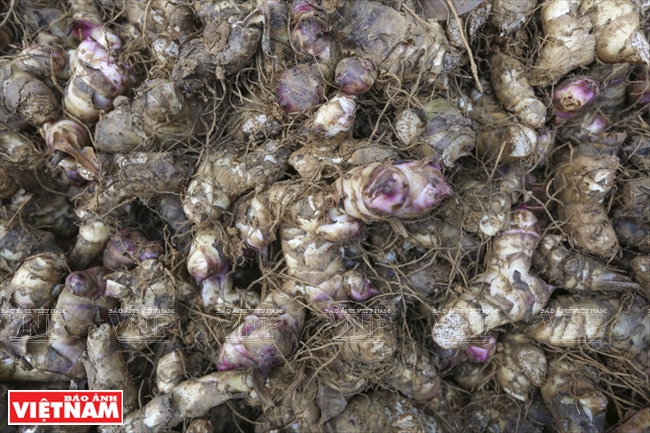
Arrowroot is the main material for making vermicelli.
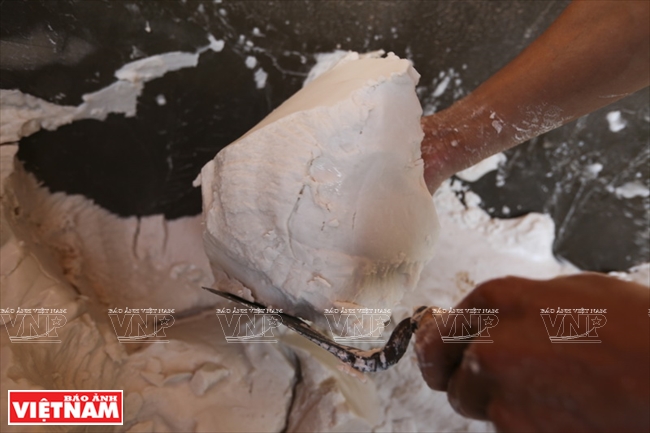
Reducing arrowroot tubers to pulp by beating them in mortars to extract the starch.
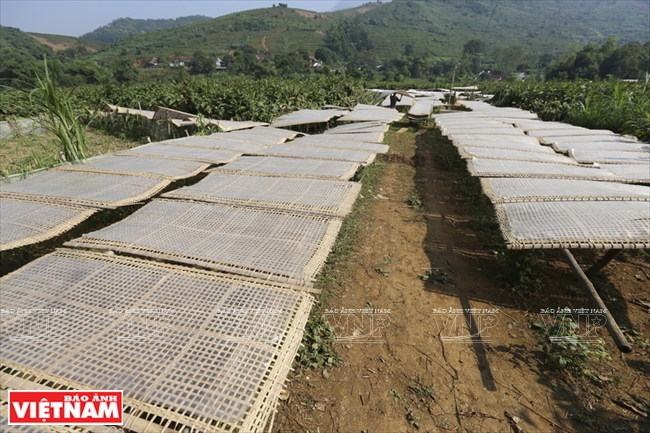
Vermicelli is dried in the sun.
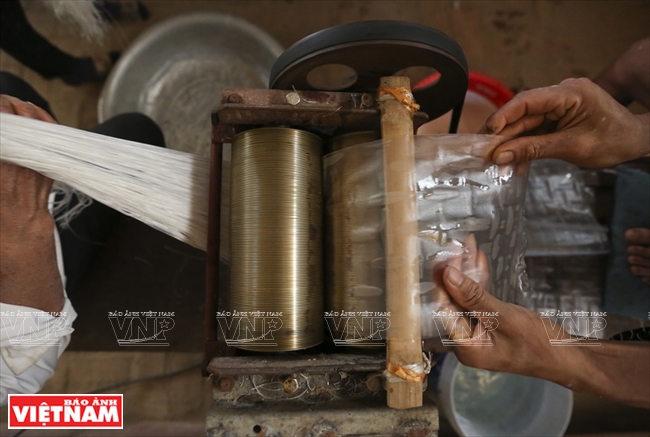
Cutting arrowroot vermicelli.
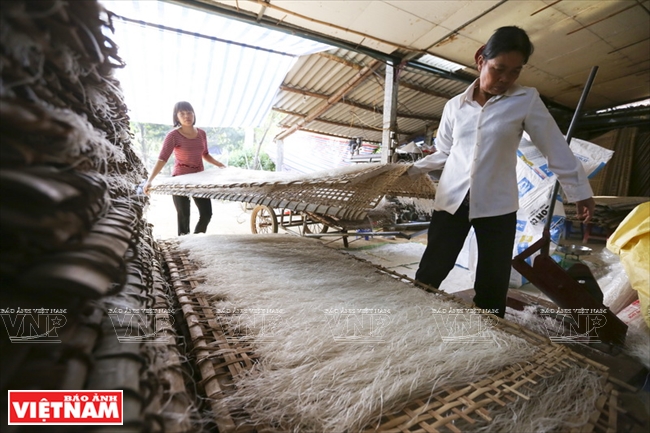
Dried vermicelli is transported to households
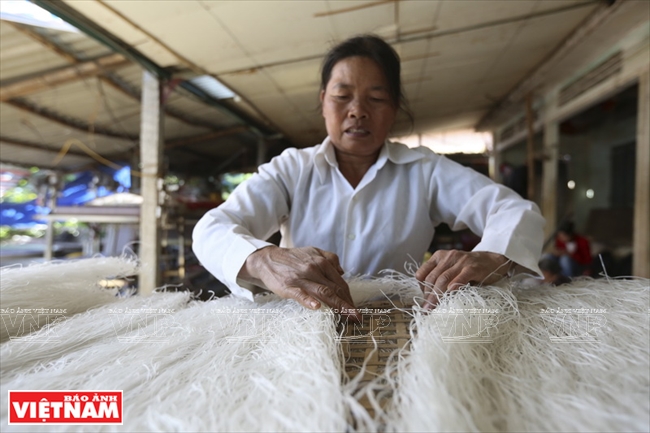
Being divided into bunches, each about 1kg.
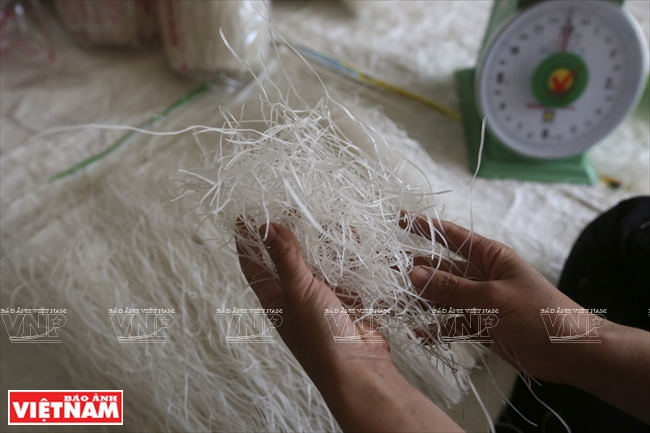
Using a special way to tie each bunch of vermicelli.
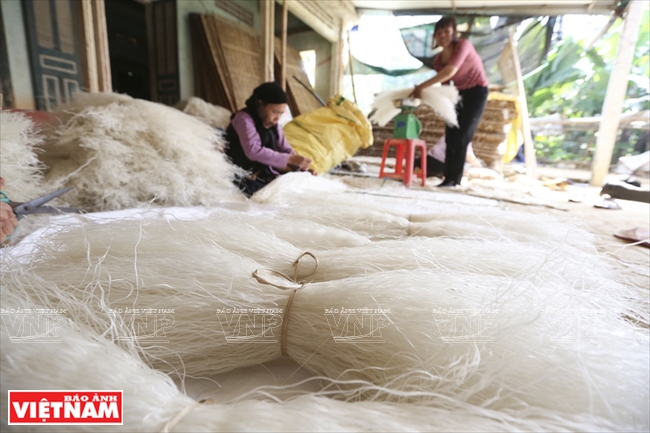
The village’s total productivity is 700-800kg.
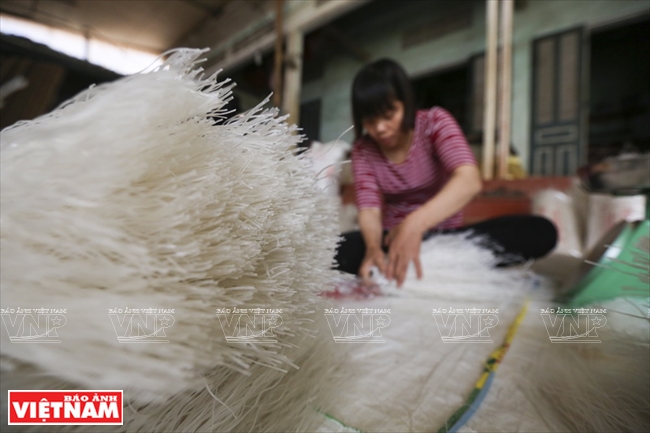
Minh Hong vermicelli is packed and transported to different provinces and cities in the country.
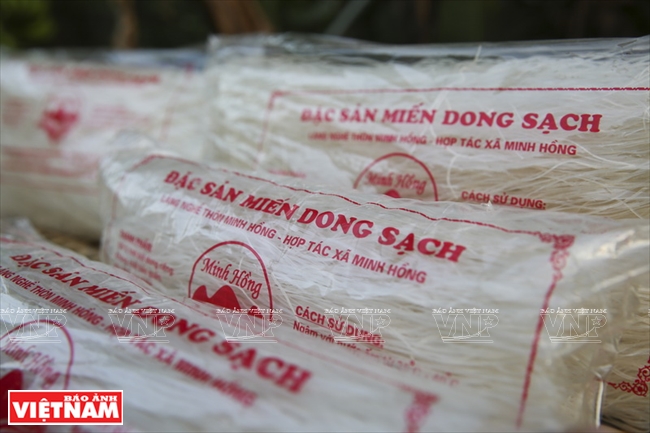
Minh Hong vermicelli is carefully packed and labeled with their origin. |
Making vermicelli is rather hard work. However, thanks to modern machines, many stages are shortened and less difficult and save costs and labour. The production must undergo several stages, including filtering the wet starch two or three times and mixing and stirring the pulp with a suitable ratio so as the vermicelli will not be easily broken. The vermicelli is dried for 3-4 hours and then pressed and cut into thin threads which are then tied into bunches and packed and labeled with their origin. To meet hygiene standards and ensure the quality of product, the villagers pledge not to use borax, bleaching powder or other harmful additives. Therefore, the village’s product has received prestige in the market and received a certificate of a registered trademark from the National Office of Intellectual Property of Vietnamin 2015.
At present, the village product is mainly sold to Tan Binh district in Ho Chi Minh City, Ha Long in Quang Ninh, Hai Duong, Phu Tho and Hoa Binh at the price of 50.000VND/kg. During Tet (the Traditional Lunar New Year), to meet the increasing demand of customers, many households must hire 5-7 employees to produce 700-800kg/days.
Thanks to the trade, the living standards of locals have improved, making a contribution to reaching the target of economic and socio development of Ba Vi district.
Story: Ngan Ha - Photos: Khanh Long